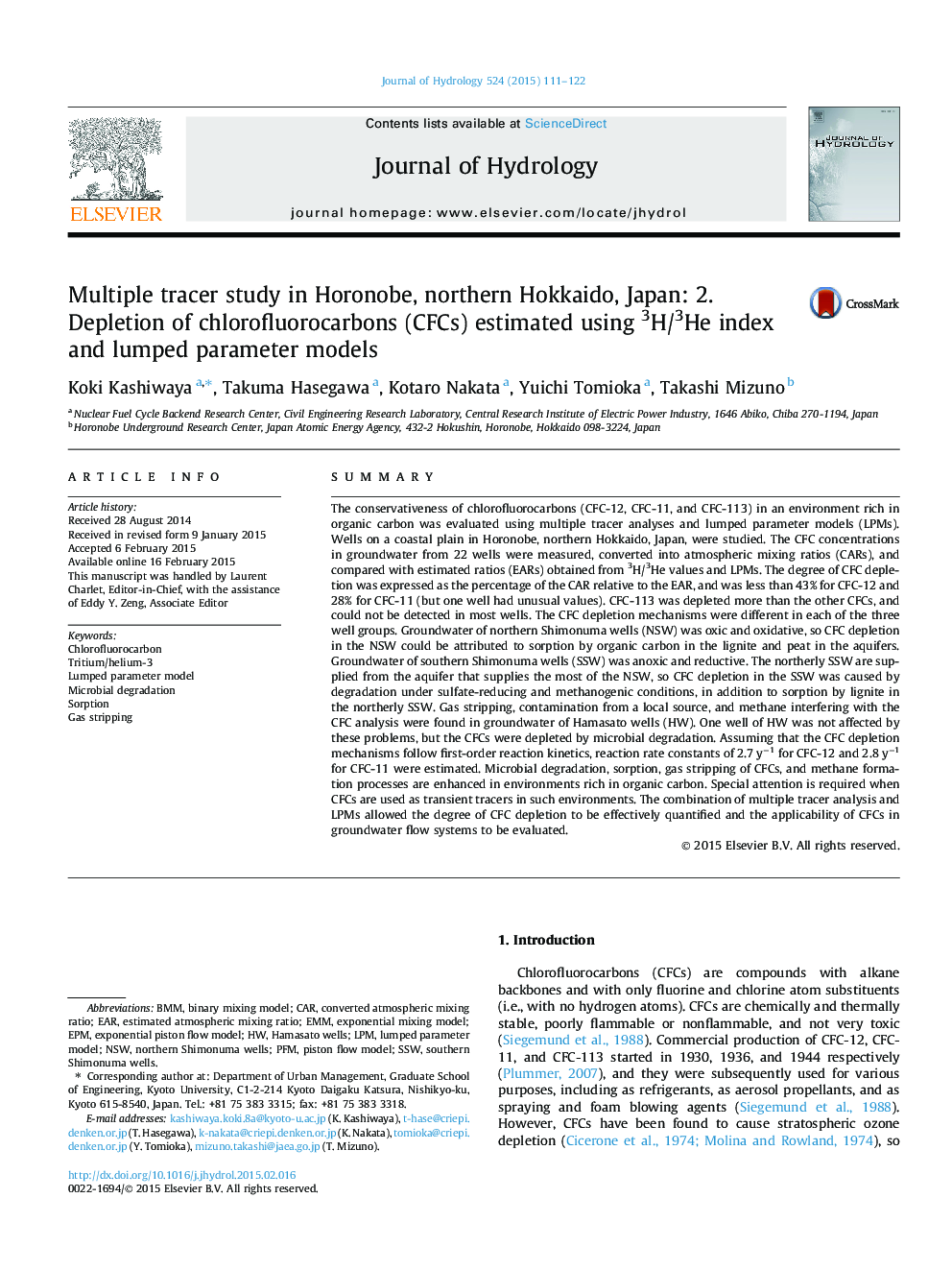| کد مقاله | کد نشریه | سال انتشار | مقاله انگلیسی | نسخه تمام متن |
|---|---|---|---|---|
| 6411398 | 1629926 | 2015 | 12 صفحه PDF | دانلود رایگان |

- CFC conservativeness in organic-carbon-rich environment groundwater was evaluated.
- CFCs in groundwater were measured at wells where 3H/3He index was determined.
- CFC concentrations were estimated from 3H/3He index and lumped parameter models.
- CFC depletion was quantified by comparing the estimated and measured concentrations.
SummaryThe conservativeness of chlorofluorocarbons (CFC-12, CFC-11, and CFC-113) in an environment rich in organic carbon was evaluated using multiple tracer analyses and lumped parameter models (LPMs). Wells on a coastal plain in Horonobe, northern Hokkaido, Japan, were studied. The CFC concentrations in groundwater from 22 wells were measured, converted into atmospheric mixing ratios (CARs), and compared with estimated ratios (EARs) obtained from 3H/3He values and LPMs. The degree of CFC depletion was expressed as the percentage of the CAR relative to the EAR, and was less than 43% for CFC-12 and 28% for CFC-11 (but one well had unusual values). CFC-113 was depleted more than the other CFCs, and could not be detected in most wells. The CFC depletion mechanisms were different in each of the three well groups. Groundwater of northern Shimonuma wells (NSW) was oxic and oxidative, so CFC depletion in the NSW could be attributed to sorption by organic carbon in the lignite and peat in the aquifers. Groundwater of southern Shimonuma wells (SSW) was anoxic and reductive. The northerly SSW are supplied from the aquifer that supplies the most of the NSW, so CFC depletion in the SSW was caused by degradation under sulfate-reducing and methanogenic conditions, in addition to sorption by lignite in the northerly SSW. Gas stripping, contamination from a local source, and methane interfering with the CFC analysis were found in groundwater of Hamasato wells (HW). One well of HW was not affected by these problems, but the CFCs were depleted by microbial degradation. Assuming that the CFC depletion mechanisms follow first-order reaction kinetics, reaction rate constants of 2.7Â yâ1 for CFC-12 and 2.8Â yâ1 for CFC-11 were estimated. Microbial degradation, sorption, gas stripping of CFCs, and methane formation processes are enhanced in environments rich in organic carbon. Special attention is required when CFCs are used as transient tracers in such environments. The combination of multiple tracer analysis and LPMs allowed the degree of CFC depletion to be effectively quantified and the applicability of CFCs in groundwater flow systems to be evaluated.
Journal: Journal of Hydrology - Volume 524, May 2015, Pages 111-122